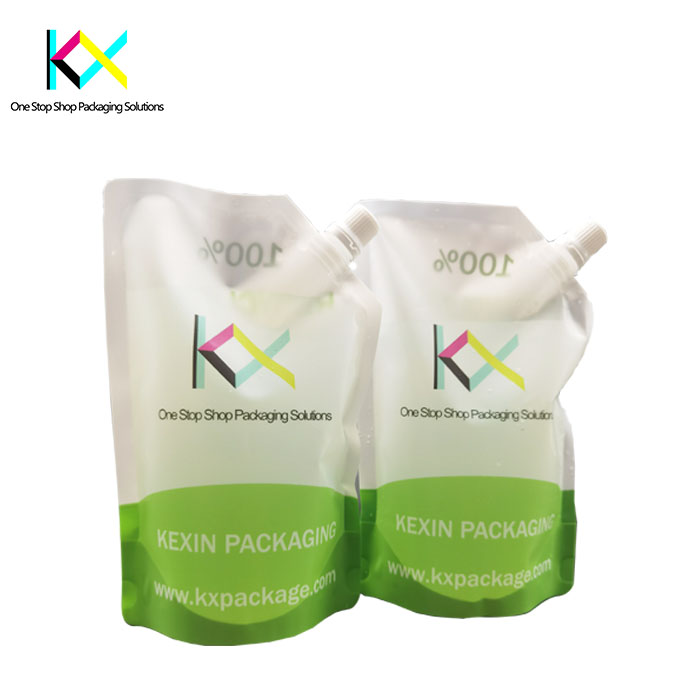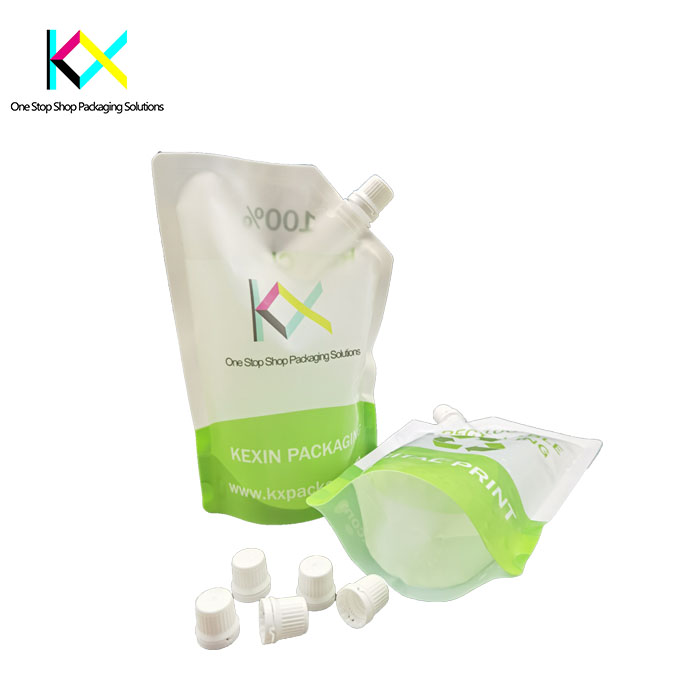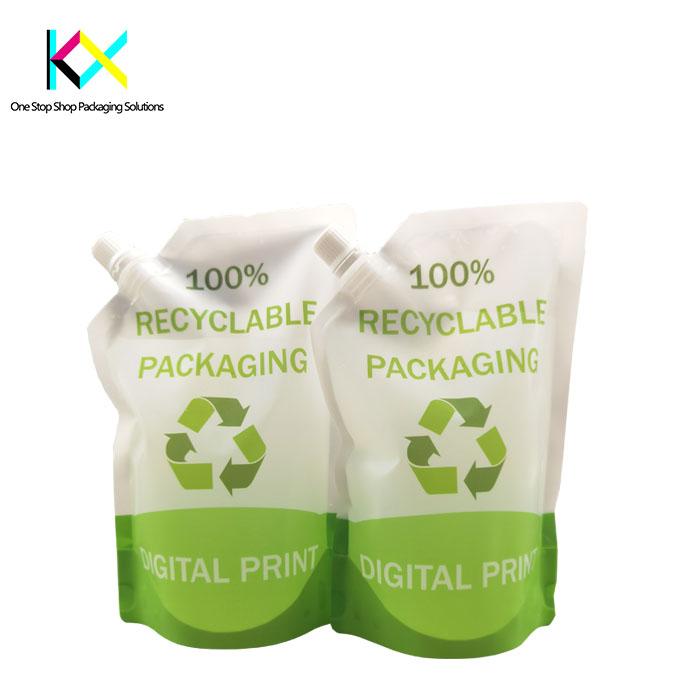Spouted Stand Up Pouches: Redefining Convenience and Sustainability in Liquid Packaging
In the fast-paced world of liquid packaging, spouted stand up pouches are emerging as a game-changer, blending user-friendly design with eco-conscious innovation. These pouches, equipped with precision-fit spouts and space-efficient structures, are revolutionizing industries from baby food to plant-based beverages. As brands grapple with sustainability mandates and shifting consumer preferences, advancements like recyclable spout pouches are proving that functionality and environmental responsibility can flow seamlessly together.

The Rise of Spouted Designs: Functionality First
The spouted stand up pouch owes its popularity to its unparalleled convenience. Its integrated spout allows for mess-free pouring—a critical feature for products like yogurt smoothies, cooking oils, or liquid detergents. Brands like Danone and Nestlé leverage these pouches for their plant-based milk lines, citing a 25% reduction in packaging weight compared to rigid bottles. Meanwhile, start-ups in the baby food sector, such as Serenity Kids, use recyclable spout pouches with BPA-free spouts to appeal to eco-conscious parents.
The stand-up design isn’t just practical—it’s a marketing asset. Retailers report that spouted stand up pouches achieve 40% more shelf visibility than traditional bottles, thanks to their vertical orientation and printable surface area.

Material Innovation: Closing the Recycling Loop
Historically, spouted stand up pouches faced criticism for their mixed-material construction (plastic spouts + laminated films). However, the advent of recyclable spout pouches is transforming the narrative. Companies like Amcor and Mondi now offer mono-material polyethylene (PE) pouches where both the spout and film are compatible with existing recycling streams. For instance, German brand Bio-Zentrale uses PE-based recyclable spout pouches for its organic broths, diverting 12 tons of plastic from landfills annually.
For high-barrier applications, such as oxygen-sensitive nut milks, brands are layering EVOH (ethylene vinyl alcohol) between PE layers—a structure that retains recyclability while blocking moisture and odors. Startups like TIPA take this further with compostable spouts made from PBAT, ensuring entire pouches break down in industrial facilities within 90 days.

The Consumer Experience: From Kitchen to On-the-Go
Modern spouted stand up pouches cater to dynamic lifestyles. Reusable caps, inspired by sports drink bottles, allow consumers to seal and reopen pouches multiple times—a feature highlighted by brands like Soylent for their meal replacement shakes. For the outdoor market, recyclable spout pouches with ergonomic handles (think Capri-Sun meets eco-design) are gaining traction.
Personalization is another frontier. Digital printing enables small-batch producers like Oatly to launch limited-edition spouted stand up pouches with localized artwork, while smart labels with QR codes provide usage tips or recycling instructions.
Tackling the Infrastructure Gap
Despite progress, only 20% of recyclable spout pouches are actually recycled due to inconsistent municipal systems. Brands are tackling this through partnerships: Hellmann’s collaborates with TerraCycle to collect used pouches for playground material, while Coca-Cola tests deposit schemes for its Simply Smoothie line.
Legislation is accelerating change. The EU’s Packaging and Packaging Waste Regulation (PPWR), effective 2025, mandates that 70% of packaging be recyclable, pushing brands to adopt mono-material spouted stand up pouches. In the U.S., California’s SB 54 imposes fines for non-compliant packaging, driving innovation in compostable spout materials.
Smart Tech and Beyond
The next generation of spouted stand up pouches integrates intelligence. Embedded RFID tags, trialed by Unilever for its Hellmann’s Mayo pouches, track freshness in real-time, alerting consumers via smartphone apps. Temperature-sensitive inks, borrowed from pharma packaging, now indicate product safety for baby food brands like Happy Family Organics.
Another breakthrough is “active” pouches. Japanese brand Kagome embeds oxygen-absorbing sachets in its recyclable spout pouches for tomato sauces, extending shelf life without preservatives.
The Future: Pouches That Give Back
Emerging innovations aim to turn packaging into a circular asset. Australian startup Great Wrap produces spouted stand up pouches from potato waste, which decompose into fertilizer. Meanwhile, blockchain-enabled pouches from French brand Bel Group allow consumers to trace a product’s carbon footprint—appealing to the 65% of buyers who prioritize ethical brands.
Conclusion: A Fluid Future
The spouted stand up pouch is no longer just a container—it’s a catalyst for change. From reducing plastic waste with recyclable spout pouches to enhancing convenience with smart features, this design is reshaping industries while aligning with planetary boundaries.
As regulations tighten and consumer expectations surge, brands must pour resources into solutions that marry utility with sustainability. After all, in the fluid dance between innovation and responsibility, the spouted stand up pouch isn’t just keeping pace—it’s leading the pour.
You can visit our website to know more about our flexible packaging pouch:

Companies that provide garage door services play a crucial role in ensuring the security and functionality of your home. Choosing the right garage door company can be a daunting task, but it’s essential for long-lasting solutions. An experienced service provider will offer a range of services, including installation, repair, and maintenance. Proper maintenance can extend the life of your garage door.
affordable garage door repair https://doors-manufactoring.com/services/garage-door-repair/
Properly insulated doors can help maintain energy efficiency and reduce heating costs.
garage opener installation price https://doors-manufactoring.com/services/garage-door-opener-installation/